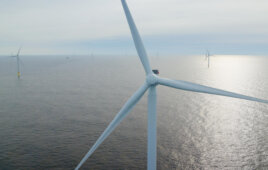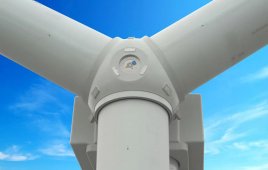According to the U.S. Bureau of Land Management, wind energy has been the fastest growing energy technology worldwide for more than a decade. Paired with each new wind project, however, are an array of challenges that can delay or impede a successful result. “Any large scale development has groups that form to oppose them,” says Juliet Browne, attorney with Verrill Dana LLP. “Wind, in particular, has its own energized set of opponents. As a result, it is increasingly difficult to permit wind projects and other large scale developments.”
Browne has been practicing in the fields of energy and environmental law for more than 20 years and formerly served on the Governor’s Wind Power Task Force in Maine. Here she shares her experience navigating large-scale, complex permitting and development projects.
One of the key lessons is the importance of local outreach and support. “In the early stages, it is important to identify key opinion leaders and respected members of the community and to reach out to them with in-depth information so they can communicate with others about the project,” says Browne. These local leaders are also a key resource to identify community concerns.
Having knowledgeable and respected local allies will help narrow the issues to focus on and will let the developer devise creative solutions that are responsive to local concerns. “For example, when looking to permit a First Wind project in Oakfield, Maine, the town was considering creating its own ordinance to regulate wind projects. First Wind and the town engaged in a series of public meetings. The town retained legal, engineering, and sound experts paid for by the developer, and there was a substantive dialogue on key issues including, most significantly, sound which had been a contentious issue.” At the conclusion of the process, the town adopted several recommendations that the developer voluntarily incorporated into its state application. The collaborative process provided the town with the information and comfort it needed. Following a vote, the town overwhelmingly voted against adopting a wind siting ordinance.
Although there were concerns at the local level, the process was a successful tool for addressing those concerns. “Not all issues will be resolved to the satisfaction of all stakeholders,” cautions Browne. “However, by engaging with the community and identifying and working with key leaders, opposition can be minimized.”
In addition to community support, it is important to have state and federal political support. “Know who the supporters and opponents are to your industry and your project. You cannot win over every opponent, but you can implement measures to prevent them from derailing the project. By addressing key concerns and providing valuable information to stakeholders, you can prevent some from falling into the opponent camp based on the inevitable barrage of opposition from vocal opponents.”
Also take time to consult with agencies that have oversight of the project. This step is crucial, says Browne, because wind developers are increasingly running into state and federal wildlife issues. “Give them a comprehensive view of the project and data. Bat mortality and cumulative avian impacts are an increasing issue. Impacts to song birds have been raised as a concern in Maine, whereas raptor impacts have been a more significant issue in the west. Myotis bat species have declined by 90% in recent years due primarily to White-Nose Syndrome.
The decline has resulted in significant operational and permitting challenges for wind projects. For example, curtailment, an operational protocol that prevents turbines from spinning in low-wind conditions, is now required for projects in areas where bats are present.” Maine, a generally conservative state, recommends that turbines not operate until wind speeds exceed 6.0 m/sec each night from one-half hour before sunset to one-half hour after sunrise from April 20 to October 15. Other states have shorter curtailment periods and lower cut-in speeds. “Overall, when looking to develop a new wind project consider the threat it will have on bats in the area and be prepared to take steps to appropriately mitigate those impacts,” she suggests.
When dealing with offshore wind projects, there is significant federal involvement and, depending on project location, state involvement. “Everyone from commercial fishermen whose routes will be impacted to residents whose views of the waterfront will be blocked, will also potentially be concerned with the project. The transmission lines required to transport the output as well as migratory paths of potentially affected species raise additional environmental concerns for review agencies.”
Whether the development will be on land or offshore, it is important to be a good listener and to follow through on commitments. Listen to supporters, opponents, agencies and those you are working with on the project. “Listening closely lets you proactively solve and minimize problems and identify opportunities for success. For the industry to succeed, individual projects need to succeed. Continued support and trust is critical for success on your next development.”
Filed Under: Featured, Projects






